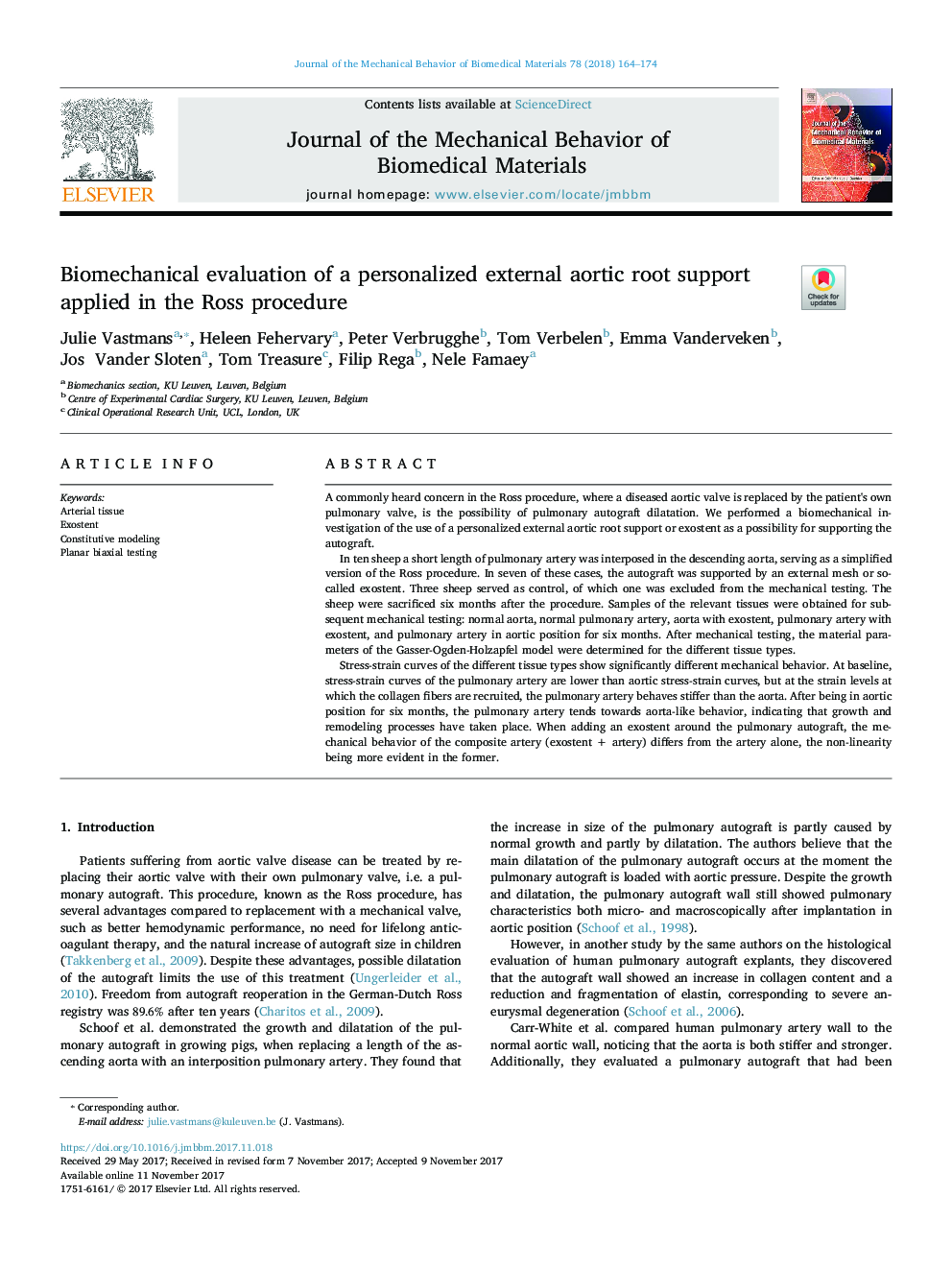| Article ID | Journal | Published Year | Pages | File Type |
|---|---|---|---|---|
| 7207305 | Journal of the Mechanical Behavior of Biomedical Materials | 2018 | 11 Pages |
Abstract
Stress-strain curves of the different tissue types show significantly different mechanical behavior. At baseline, stress-strain curves of the pulmonary artery are lower than aortic stress-strain curves, but at the strain levels at which the collagen fibers are recruited, the pulmonary artery behaves stiffer than the aorta. After being in aortic position for six months, the pulmonary artery tends towards aorta-like behavior, indicating that growth and remodeling processes have taken place. When adding an exostent around the pulmonary autograft, the mechanical behavior of the composite artery (exostent + artery) differs from the artery alone, the non-linearity being more evident in the former.
Related Topics
Physical Sciences and Engineering
Engineering
Biomedical Engineering
Authors
Julie Vastmans, Heleen Fehervary, Peter Verbrugghe, Tom Verbelen, Emma Vanderveken, Jos Vander Sloten, Tom Treasure, Filip Rega, Nele Famaey,
